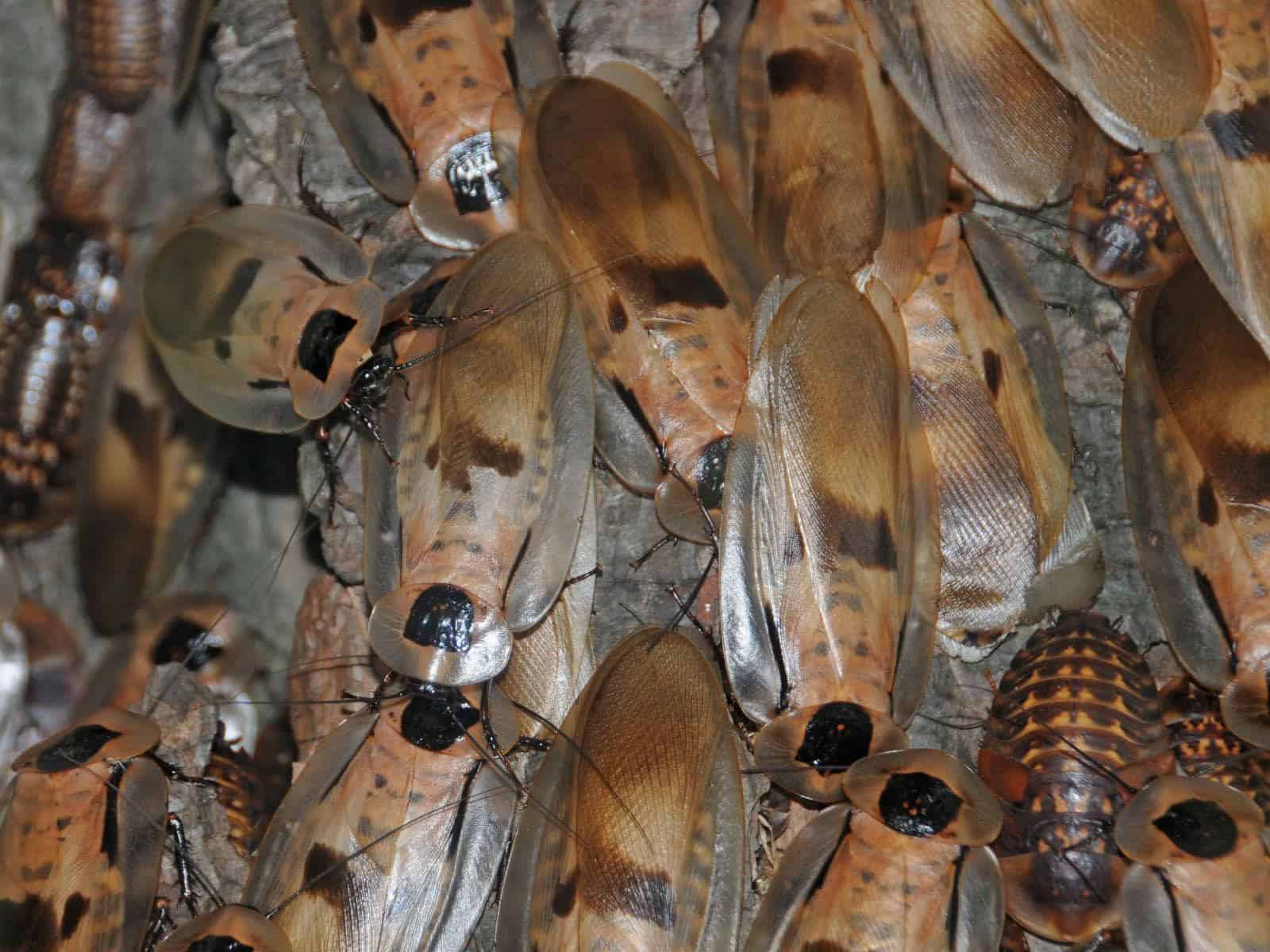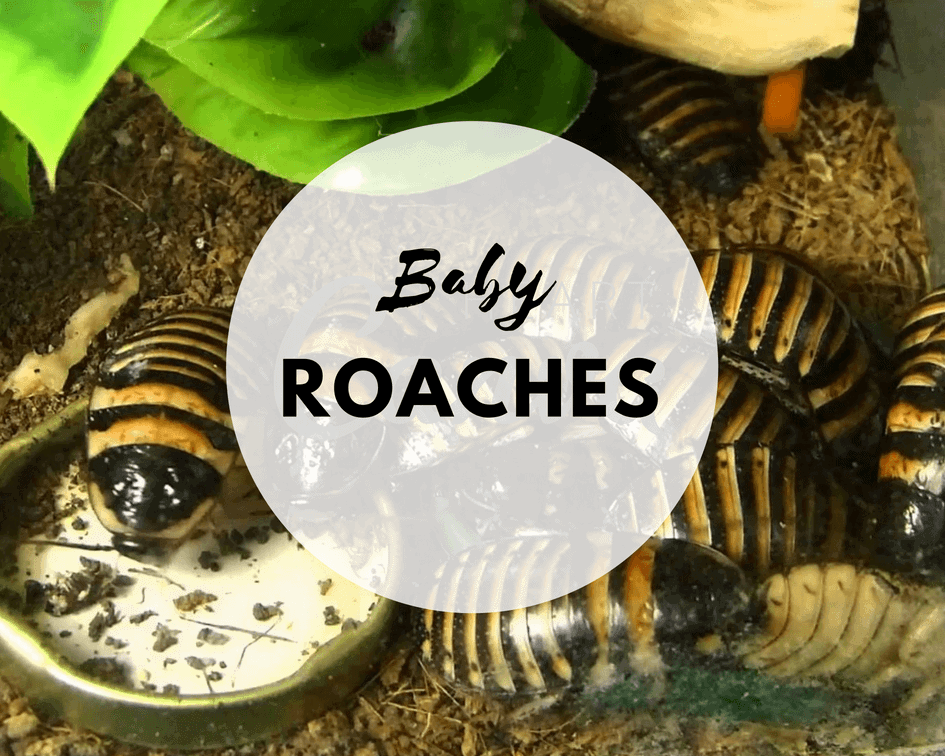Did you know that finding one baby cockroach in your kitchen is worse than finding ten adult ones scurrying around? This is because the presence of a single baby roach only signifies one thing; there are probably hundreds of roaches hidden somewhere in their nests.
Finding signs of roaches in your kitchen can be quite troublesome since it’s where you handle all your food preparation. Most people do not take the presence of baby cockroaches in their kitchen seriously, and it’s time we all did.

In our post today, we are going to take you through different risks associated with baby roaches, how to identify them and finally get rid of them for good. Read on for more information.
Introduction
Baby cockroaches in your kitchen are a significant sign that there are either German or American roaches in your home. This is because these species prefer a warm and humid environment, with plenty of water and food. They mostly feed on the garbage and debris, as well as grains, and other foods consumed by humans. Knowing the exact type of cockroach in your kitchen will definitely come in handy during elimination since not every method works for all species.
You should be worried about baby roaches because cockroaches are among the pests with the fastest reproduction. A female roach produces her first ootheca (egg pouch) roughly a week after mating, with each pouch holding about 16 roach eggs.
The female will produce about two oothecae in a week, which only means over 30 eggs. This means that in just a few months, there will be hundreds of small roaches invading your home, half of these being females, and sadly, the cycle continues and a heavy roach infestation is inevaitable.
The female German cockroach carries its pouch around for a few days, as it looks for the best place to hide it until it hatches. In a year, this roach species can produce up to 300,000 baby German roaches. This is the roach species you should be most skeptical about.
American female cockroaches, on the other hand, seek to deposit their ootheca rather fast after production. They have a life expectancy of about one year and can only produce about 800 baby American roaches annually.
Good news is, sometimes baby roaches in your kitchen does not entirely mean that there is a possible roach infestation. You might have introduced the egg sacs from other sources, not in your home, like cardboard boxes and other packaging items.
However, roach egg sacs carry about 40 eggs or more and can hatch on their own and do not necessarily need a female adult. So if you brought one into your kitchen, they will definitely hatch, which is why you will see some baby roaches crawling about. This situation is much easier to manage because you only need to get rid of the sac and the baby roaches, cutting off the reproduction process.
How to identify baby roaches in your kitchen
You already know how adult cockroaches look like. But would you be able to identify a baby roach the moment you saw one?You can easily confuse baby roaches for small crickets or bugs.
Baby roaches emerge as white or gray nymphs after they hatch from their ootheca. The color depends solely on their species. They have smooth bodies, with no markings at all, and are only about 3 millimeters long.
They go through different molting phases before they are fully adults, which takes about forty and one hundred and 160 days, depending on the environment and the species. During this phase, they transition in size and even in color.
German baby roaches are about 1/8th of an inch long, gray in color and begin developing one stripe on their backs as they mature. Their American counterparts are about ¼ inch in length and gray brown in color, which changes to reddish brown as they grow,
Baby roaches do not have wings so you will mostly see them crawling about in your kitchen as they can’t fly. Since they cannot cover very long distances, they mostly stay hidden around the area where they were hatched until they are mature enough to set out on their own and possibly join their adult counterparts.
It only takes them just a few minutes to be able to make full use of their limbs. Therefore, if you spot small white pests in your kitchen, they are mostly baby roaches. This is a clear indicator that there is a roach colony already established and you need to take action immediately.
The risks associated with baby roaches
Just like the numerous harmful effects caused by adult roaches, baby roaches too have the potential of causing much bigger problems since they are also disease vectors.
If there is someone who suffers from respiratory diseases in your home, they are at risk of getting asthma attacks or allergies from the viruses and bacteria carried by the baby cockroaches.
After they hatch, these roaches shed off their skin numerous times before they reach maturity, which may take a few months. Now imagine having a bunch of these very small roaches in your kitchen, leaving their shells everywhere. This definitely contaminates your food and utensils causing food poisoning as a result.
Most times, you may not even notice the shells. What may bring this to your attention will be an asthmatic person suddenly wheezing, coughing or sneezing when in your kitchen. The allergies may present themselves in form of severe itching or be having watery eyes. The worst part is that until you get rid of the baby roaches, this will keep happening and not even over the counter medication will help the victim.
Getting rid of baby roaches from your kitchen
The first step you should take the minute you spot a baby roach in your kitchen is starting planning on ways to eliminate them. Remember, the few baby roaches you see scuttling around tells you of a much bigger roach problems you might be facing. Therefore, whatever way you choose on using should be geared towards getting rid of the entire colony, right from their nest.
There are various techniques you can adopt to deal with this. The first thought that may occur in your head is to use a spray to kill the baby roaches you see or just crush them. But what happens to the rest that is probably hiding out?
Before we get into specific techniques, it’s best to point out that you should clean your kitchen thoroughly and wipe off any spills or food grease which attracts the baby roaches. Moreover, you should immediately discard any food item you think that the baby roaches have either crawled on, nibbled or defecated on to avoid food contamination. Sealing out any visible holes and cracks in your kitchen with caulk also goes a long way to keep the pests out.[adinserter name="Block 2"]
Sticky traps
Not sure if your roach suspicions are correct? You should lay out some tricky traps in your kitchen that will capture any baby roach that comes into contact to confirm your fears.Focus on dark areas, cabinet corners, under the sinks and behind appliances.
The presence of many roaches on your trap tells you that you have a heavy infestation that should be dealt with immediately. Fewer roaches on the trap signify a lower traffic hence you should work on eliminating all the existing roaches to prevent reproduction from occurring.
However, your traps will only eliminate the baby roaches that come out of their nests. There may be more left behind that you are not aware of. This is precisely why you should not solely rely on traps as an efficient method, but try out other techniques that will target roaches in their nests.
Killer sprays
If you are certain of a much smaller infestation and know the exact areas the baby roaches are hiding out, you can purchase killer sprays to help you out with the elimination.
Keeping in mind that baby roaches mostly hide in dark areas like cracks, crevices, interior pipes, doors and windows, you can easily target these areas.
Also, these very small roaches can run as fast as the adults, making it quite a task for you, if you have to kill one by one.
Baits
This is the most popular, and yet so effective method of getting rid of baby roaches without an exterminator.
Once they are hatched, they regain the full use of their limbs almost immediately and start looking for food. Because of their large population, baby roaches rarely feel threatened to leave their nests in pursuit of food and water. This is why you will mostly spot them in your kitchen.
The baits are not only designed to kill baby roaches but mostly, they are meant to be carried back to the roach nests, where the rest of the colony can feast on the bait and die. Roaches will even eat their own when starving, and the minute they ingest a dead roach that had already come into contact with the bait, they die as well.
Read more articles about Bait: best bait for rat trap
You have to be ready to set many small baits around your kitchen if you want to get rid of them completely. Gel baits have a high success rate, and they are also affordable.
When you have tried the commercial baits and they do not seem to give you the results you were looking for, you can try out other more aggressive methods, like hiring exterminators who are trained to deal with such situations on a larger scale.
Homemade roach repellers
If you cannot afford to spend money on over the counter products, you can make your homemade solution that may work just as well. Natural repellers come in handy when you have young kids and pets at home and cannot risk their safety, from the roach killers’ toxic levels.
For your DIY bait, mix about three tablespoons of boric acid with one tablespoon of sugar. You can add the solution depending on the level of the infestation. Ensure that you spread your bait under your sink, behind appliances, and in cabinet corners. This is a low cost method, which is safe to use around kids and pets.
Alternatively, you can try out natural products if the idea of spraying or using powder in your kitchen does not sit well with you. Bay leaves, catnip and Osage orange oil are some of the natural killers you can try out. Leave these items in areas you have seen baby roaches crawling around, or in visible cracks and crevices and wait for the results.
You can also try using borax, a nontoxic powder, which works by drying out a roach’s exoskeleton thus causing its death. This solution may not be labeled as an instant killer, but it works for baby roaches because once they come in contact with the powder, they will drag it back to their nests hence infecting the entire colony.
Insect growth regulators
You should know that this is not entirely a technique of elimination, rather a way to stop baby roaches from fully molting into adults and reproducing. Therefore, we recommend using another method such as baits, alongside these IGR’s.
Another downside is that they have no effect on adult cockroaches. Their main work is to trick the baby roaches into thinking that they are not ready to reproduce, which keeps them from fully maturing. More reason why the IGR’s should not be used on their own.
Hiring an exterminator
If all the above methods do not work, you can get trained professionals to help you out. They have the skills and appropriate tools to deal with a heavy cockroach infestation, especially if you are in an apartment.
Exterminators will use chemical sprays and solutions for their fumigation, therefore, if you have kids and pets, it’s best you let them know early enough to avoid causing harm. This method can also be quite costly depending on the levels of infestation, hence it’s best if you have a budget for it to avoid breaking your bank.
Conclusion
Baby roaches in your kitchen are an indication of a much bigger roach problem in your home. You should not delay and watch as the infestation gets worse.
The moment you detect their presence, you should start on different elimination techniques immediately. If one method does not work, move on to the next and do not give up until your home is finally cockroach free. Are you looking to prepare your home for sales/renting? Check out this home improvement cost guide to budget your renovation projects and increase your property value?





